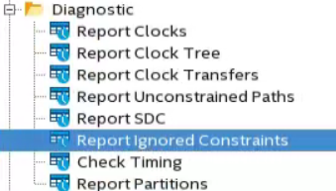Visible to Intel only — GUID: krx1521489935946
Ixiasoft
1.1. Comparison of the EPE and the Intel® Quartus® Prime Power Analyzer
1.2. Power Estimations and Design Requirements
1.3. Power Analyzer Walkthrough
1.4. Inputs for the Power Analyzer
1.5. Power Analysis in Modular Design Flows
1.6. Power Analyzer Compilation Report
1.7. Scripting Support
1.8. Power Analysis Revision History
1.4.2.1. Waveforms from Supported Simulators
1.4.2.2. .vcd Files from Third-Party Simulation Tools
1.4.2.3. Signal Activities from RTL (Functional) Simulation, Supplemented by Vectorless Estimation
1.4.2.4. Signal Activities from Vectorless Estimation and User-Supplied Input Pin Activities
1.4.2.5. Signal Activities from User Defaults Only
1.5.1. Complete Design Simulation
1.5.2. Modular Design Simulation
1.5.3. Multiple Simulations on the Same Entity
1.5.4. Overlapping Simulations
1.5.5. Partial Simulations
1.5.6. Node Name Matching Considerations
1.5.7. Glitch Filtering
1.5.8. Node and Entity Assignments
1.5.9. Default Toggle Rate Assignment
1.5.10. Vectorless Estimation
2.5.1. Clock Power Management
2.5.2. Pipelining and Retiming
2.5.3. Architectural Optimization
2.5.4. I/O Power Guidelines
2.5.5. Memory Optimization (M20K/MLAB)
2.5.6. DDR Memory Controller Settings
2.5.7. DSP Implementation
2.5.8. Reducing High-Speed Tile (HST) Usage
2.5.9. Unused Transceiver Channels
2.5.10. Periphery Power reduction XCVR Settings
Visible to Intel only — GUID: krx1521489935946
Ixiasoft
2.6.1.1. Find Timing Information
- To find False or Multi-Cycle Paths, click Report Ignored Constraints in the Timing Analyzer Tasks pane.
Figure 32. Report Ignored Constraints

- To see a list of the 10 paths with highest delay in the design, in the Reports pane find Fitter Summary Report > Estimate Delay Added for Hold Timing > Details.
